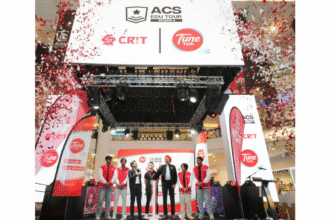Australia’s largest accounting body, CPA Australia, says the Productivity Commission’s groundbreaking proposals add more fuel to the public debate on tax reform, but questions whether increasing the tax burden on the country’s largest companies will lead to a more dynamic and resilient economy.
In the first of five interim reports to identify reforms under the Albanese government’s five pillars of productivity growth inquiries, the Productivity Commission recommends cutting the corporate tax rate for businesses with revenue less than $1 billion to 20 per cent while increasing the burden on the biggest companies with an additional 5 per cent cashflow tax.
CPA Australia’s Chief Executive Officer, Chris Freeland AM, said the Productivity Commission’s audacious proposals will reinvigorate the public debate on tax reform heading into the Treasurer’s Economic Reform Roundtable. However, he urges the government to look beyond the Commission’s narrow recommendations and take a more holistic view of tax reform.
“Comprehensive tax reform is fundamental to improving productivity and growth. Any changes to corporate tax rates should be considered and modelled as part of broader reforms, including personal income tax and GST,” said Mr Freeland.
“A reduction in business income tax for small and medium sized businesses would be beneficial to those businesses, but increasing the tax burden on the country’s biggest employers with an untested cashflow model is unlikely to stimulate economic growth. In fact, it could have the adverse effect.
“A well-designed tax system can stimulate economic growth, improve productivity and benefit the wider community. Conversely, a poorly structured system can be a handbrake on progress and undermine Australia’s international competitiveness.
“It’s vital that reforms to the tax system do not create barriers and deter capital investment in Australia. Australian businesses remain exposed to global trade uncertainty and any changes to domestic tax policy should aim to foster a more stable and supportive business environment.
“Introducing two corporate tax systems and imposing higher taxes on the largest companies appears to be at odds with the objective of the productivity reforms.”
Mr Freeland is concerned about the proposal to introduce cashflow taxation which he says would add another layer of complexity to Australia’s tax system.
“The proposal to add cashflow-based taxation to all companies raises myriad issues that will need careful attention, including the interaction with franking credits, treatment of carried-forward losses, and the true effective tax rate for all businesses. This creates significant uncertainty around the new cashflow tax,” he said.
“Any reforms must ensure our tax system is attracting rather than repelling investment. High tax rates combined with complex rules are only going to make Australia a less-attractive place to invest and do business.”
CPA Australia welcomes the Productivity Commission’s proposals to help alleviate the regulatory burden on business, as well as creating a pathway to ensure a more critical approach to future regulation setting.
“We are pleased that the Productivity Commission agrees with our recommendations to cut existing red tape and curb the growth of new regulation, including appointing an independent statutory commissioner to oversee the Office of Impact Analysis and raise the standards for these guidelines,” said Mr Freeland.
“The Commission is right to highlight the vital role government agencies play in delivering economic growth, enhancing competition and driving innovation through regulatory systems. Strengthening expectations and establishing accountability within the public service for regulatory impact is a key step in reducing red tape and improving economic growth and productivity.”
Legal Disclaimer: The Editor provides this news content "as is," without any warranty of any kind. We disclaim all responsibility and liability for the accuracy, content, images, videos, licenses, completeness, legality, or reliability of the information contained in this article. For any complaints or copyright concerns regarding this article, please contact the author mentioned above.

















